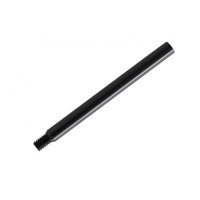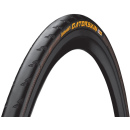Tires, Inner Tubes and Accessories
Welcome to the "Tires, Tubes, and Accessories" category of the Bike Punk Shop! Here, you will find a carefully curated selection of high-quality tires, durable tubes, and practical accessories to make your rides safer and more comfortable. Whether for urban commuting, mountain biking trails, or long tours, our range offers the perfect products for every riding style. Discover the latest innovations and trusted classics that will give your bike adventures the ultimate boost!
The Optimal Tire Choice for Your Bike: Safety, Performance, and Riding Fun at Bike Punk Shop
Welcome to "Tires, Tubes, and Accessories" – the heart of ambitious cyclists at Bike Punk Shop! Bicycle tires are much more than just rubber rings mounted on rims; they are crucial for your riding experience, safety, and performance. Here, we offer you a carefully curated selection of high-quality tires, robust tubes, and practical accessories to optimize and enhance the safety of every ride you take. Whether you're cycling through city streets, navigating mountain trails, or planning long tours – our range has the right product for every riding style.
The Importance of the Right Tires
Choosing the right tire is a critical factor when it comes to riding fun, performance, and safety. Tires are the only connection between your bike and the ground, and they affect every aspect of your ride. A poorly selected tire can negatively impact the entire experience and slow you down, while the right tire can significantly enhance your performance and confidence on the bike.
At Bike Punk Shop, you'll find a wide variety of tires for different purposes. We carry products from renowned brands such as Continental, Panaracer, Schwalbe, WTB, and HALO. Whether you're looking for high-performance road bike tires, robust MTB tires, or comfortable city bike tires – our selection leaves nothing to be desired!
Types of Tires and Their Special Properties
There are various types of tires, each offering specific features and benefits:
-
Road Bike Tires: These are typically narrow to minimize rolling resistance and achieve maximum speeds. They are designed for use on smooth roads and provide excellent grip at high pressures of up to 9 bar. Modern rubber compounds and optimized casings not only make them lightweight but also provide the perfect balance of grip and comfort.
-
MTB Tires: Mountain bike tires are robust and heavily treaded to ensure optimal traction even in rough terrain. Tread patterns and special rubber compounds are tailored to the specific terrain, ensuring maximum grip whether on muddy trails or rocky descents. Various widths and tread designs guarantee the right choice for every type of terrain.
-
Gravel and Touring Tires: Gravel bike tires are a blend of road and MTB tires, optimized for a wide range of surfaces. With center ribs for lower rolling resistance and profiled sidewalls, they offer excellent riding characteristics both on the road and off the beaten path.
-
City and Trekking Tires: These tires are specifically designed for urban environments and daily commuting. They provide a good compromise between rolling efficiency, comfort, and puncture protection. Thanks to their wider construction and specialized tread designs, they can also handle occasional off-road excursions without any problems.
Measurements and the Right Selection
The tire should fit perfectly to the rim and frame of your bike. Important parameters include the inner diameter of the tire and its width. The most common sizes for road bike tires are 700c, while for mountain bike tires, sizes like 26", 27.5", or 29" are standard. The E.T.R.T.O system (European Tyre and Rim Technical Organisation) has established itself as a reliable measurement unit, where the first number indicates the width in millimeters and the second the inner diameter of the tire.
Finding tire measurements and the correct tire size for your rims – a brief dive into tire science!
Whether it's wire tires, folding tires, or tubeless tires – current tires often come with specifications from up to three sizing systems: the French system, the inch-based system, and the much more precise E.T.R.T.O system. The existence of these different measurement systems has historical and national origins. These varying national measurement systems once meant that the same tire size was known by different numerical designations in different countries. This led to the production of tires in varying sizes under the same designation in different countries, which were not compatible with each other! The "classic" standards for tire sizes, the French and inch-based systems, are based on the outer diameter of the tire and are given in inches (e.g., 26 inches or 28 inches) or millimeters (650, 700). The International Standardization Organization (ISO) has a more universal system, the E.T.R.T.O system, which is based on the ISO 5775 standard for the uniform labeling of bicycle tires and rims. The ETRTO system uses only two numbers based on the tire's width and very importantly – the inner diameter of the tire that matches the outer diameter of the rim.
The oldest size system for tires is the French one. Originally developed in the motherland of cycling sports, the French designation consists of a three-digit number indicating the approximate outer diameter of the tire in millimeters, a multiplication sign, a two-digit indication of the tire width in millimeters, and a letter. For example, this could be: 700x25C. The letter is meant to hint at the recommended inner rim diameter and the tire's height. A = narrow to D = very wide. However, nowadays the letter doesn't say much about the actual width, since for instance, the current 700C road bike tires are relatively narrow and are run on correspondingly narrow rims, while wide twenty-nine inch MTB tires also carry a 700C designation in the French system and are sometimes used on rims 40 mm wide.
In the inch-based system, one inch is 25.4 mm. The inch designation can be written in decimal form (e.g., 29 x 2.40 inches) or as a fraction (e.g., 28 x 1 1/2 inches). The first number refers to the approximate outer diameter of the tire, and the second usually refers to the tire width. In a three-part fraction sizing like 28" x 1 5/8" x 1 3/8", the second value indicates the height and the last one the width. Between the values, multiplication signs are used. When cyclists talk about 26ers or 29ers, they are always referring to the first value of the inch indication. The outer diameter specification rarely corresponds to the actual required diameter. This is due to the large range of widths and the inner diameter of the rim – so, for example, 29-inch tires end up being very broad 28-inch tires and can also fit on wheels designated as 28 inches.
The system of the European Tyre and Rim Technical Organisation is based on the international standard ISO 5775 for the uniform labeling of bicycle tires and rims. The indication is given in millimeters and can look like this: 43-584. The first number stands for the tire width and is usually measured at the widest point of the casing. This result can vary depending on the rim and tire pressure with the same tire. The second, three-digit number after the hyphen indicates the tire's inner diameter. It corresponds to the rim diameter at the tire seat. Your tire will reliably fit your wheel or rim if the three-digit E.T.R.T.O specification matches.
Like few other components, tires significantly influence the riding feel of the bike. They affect grip and have a major impact on how smoothly and comfortably a bike rolls. For every application, the blend of low rolling resistance, low weight, high traction, and good puncture protection looks a bit different. Established manufacturers manage to combine contradictory requirements with ease and offer their sporty profiles in various variants as folding tires, wire tires, with or without additional puncture protection, and even different rubber compounds. The first criterion when buying tires should be the correct size, that is, the wheel diameter and the tire width that can be used in the frame and fork. This is generally given either in inches (29 x 2.25) or as an ETRTO specification in millimeters (56 - 622).
Types of Tubes and Their Properties
Tires also come with matching tubes, which are essential for operation. The most common materials are butyl and latex, with butyl tubes being widely used and extremely robust. Latex, on the other hand, offers lower rolling resistance but is more sensitive and needs to be replaced more often.
Types of Tubes:
- Standard Tubes: The most robust variant made from butyl, ideal for everyday use.
- Lightweight Tubes: These offer less mass, making them popular among road cyclists. However, puncture protection is somewhat reduced here.
Tubeless Systems:
More and more consumers are opting for tubeless tires, which work reliably without a tube and often offer less susceptibility to punctures. Sealant is used in this system to immediately seal any potential holes.
Safety and Comfort Accessories
Accessories related to tires and tubes also enhance safety and comfort. These include, among others:
- Rim Tape: It protects the tube from sharp edges of the rim and ensures a tight connection.
- Valve Extensions: These are useful for hard-to-reach rims and make inflating easier.
- Pumps: With this, you are well-equipped to check air pressure at any time and adjust as necessary.
- Tire Levers: These small tools make mounting and dismounting tires easier.
The Influence of Tires on Riding Behavior
As mentioned, tires play a crucial role in the overall riding behavior. They affect grip, rolling resistance, comfort, and the general handling of your bike. A high-quality tire leads to a better riding experience – you’ll notice that you can climb more easily, take corners better, and feel more secure even on wet and slippery surfaces.
Additionally, tires with special puncture protection contribute to safety. Many manufacturers use special layers or rubber compounds that make the tire more resistant to cuts and punctures.
Tire Change: When is the Right Time?
The lifespan of a tire depends on various factors, including riding style, weather conditions, and the terrain used. In general, a tire should be replaced when:
- The tread is heavily worn.
- Cracks or blisters are visible in the tire wall.
- The tire is losing air easily.
It is recommended to check tires after a mileage of 3000 to 6000 kilometers. Be aware that any risk of a flat tire also endangers safe riding on the road.
Find the Right Tires for Your Bike
In the "Tires, Tubes, and Accessories" category of the Bike Punk Shop, you'll find everything you need for your bike. From high-quality tires to robust tubes and essential accessories – you can rely on a wide selection, expert advice, and fair prices. Whether you’re a street fighter on asphalt or an adventure lover on mountain trails – the perfect tire for your bike is waiting for you! Thumbs up for safe and comfortable riding tailored to your individual needs! Browse around and discover the diversity of our products!
If you have questions about our range of tires, associated tubes and accessories, are not sure whether or which are compatible with your bike or want general advice, contact us by phone, by mail or just visit us in our BIKE PUNK SHOWROOM in Berlin-Kreuzberg! If we do not have a certain product in stock, we will try to get it for you in a timely manner. We are happy to advise and accompany you on all topics related to your bike. For the latest products, inspiration and information follow us on Instagram!







